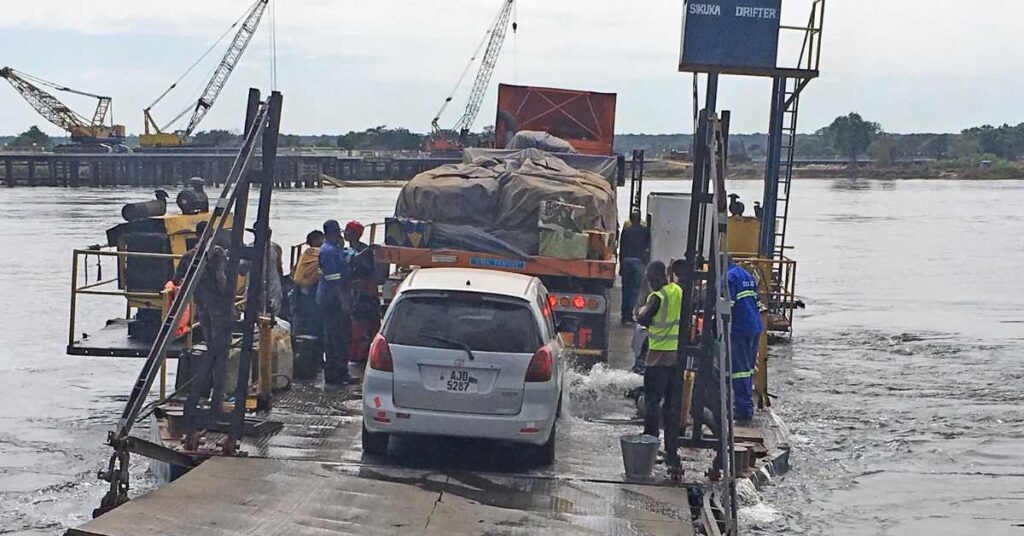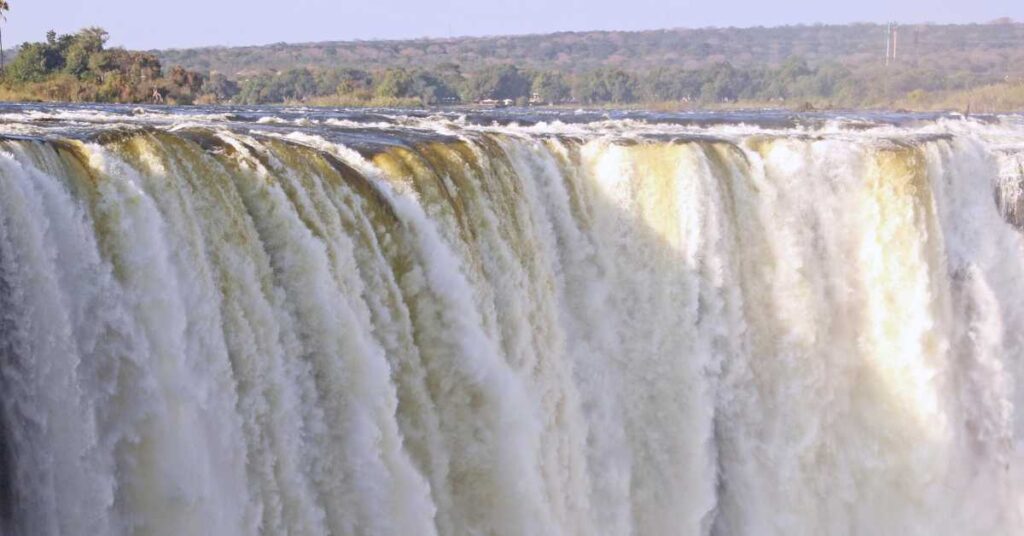The Kazungula Border Crossing – One Big River and No Bridge
The Kazungula Border Crossing – One Big River and No Bridge The Botswana-Zambia border at Kazungula is probably the best known border crossing in southern Africa. There’s no bridge over the Zambezi River. A Zambia Daily Mail article described the only link between the two countries as “two pontoon ferries wobbling across the river on hourly intervals . . . .” Add to this that the crossing is on a major commercial truck route. Traffic tie-ups are guaranteed. Our little group had an easy transit via motorboats arranged by our African trip facilitators. We left our bus on the Zambia side, loaded people and baggage onto two boats, and picked up a new ride in Botswana. So, this isn’t a harrowing tale – and I’ve read some – it’s a picture. But if you’re self-driving, and don’t have friends to counsel you, I suggest reading widely and looking at all the traveler blogs you can find. Experiences can differ. A Bridge in the Works A bridge and new border control process have been in the works since 2005 and in 2015, the Lusaka Times said to look for Phase I completion in 2017. A 2016 allafrica.com article said to expect completion, which I guess is final completion, in October 2018. But in May 2017, the only way to take a vehicle – and many pedestrians – across was still by pontoon ferry. An allafrica.com writer allowed that “adventurous tourists” might like this, but not so much if you’re a commercial trucker or local. When the bridge and new border posts open, the effect on commerce will be staggering, but for now, vehicles and people cross the old way, a very few at a time. The crossing’s greatest threat might be delays to commerce, but it can be dangerous, too. A 2015 article posted on allafrica.com said: “[the crossing is] a terrifying experience because of many accidents. . . .” The writer cites tragedies, including when about 15 people, mostly Zambians including women and children, “perished when a South African heavy-duty truck tipped over, throwing passengers on board the pontoon into the crocodile-infested and fast-flowing Zambezi River . . . .” Directing traffic at Kazungula A Slow Trip to the Boats You’ll know the border’s getting closer when you reach the queue of trucks. We found the queue much longer in Zambia than Botswana. Very slowly, we passed trucks carrying shipping containers, tarp-covered loads liberally strapped against bumpy roads, piles of construction materials and who knows what else. Whether they were waiting for days or weeks – and wait times for a ferry ride can be long – drivers stood talking, cooked meals on camp stoves, checked loads, made repairs, killing time. Finally at the river, border guards directed traffic, maybe, except that not much was moving. There were informal currency deals yards from a Bureau de Change and Zambian Revenue office. People sat, stood, hovered. No one approached a colorful pile of clothes on the ground, perhaps donated items that had gotten this far and then stopped in the dust. The scene was marvelous in its way, crowds of people, so much happening at once, and yet not happening. Border crossing The ubiquitous souvenir men hoisted their baskets of bowls and carved animals. “I’ll give you goodbye price, five dollars” said one man holding a hippo. “Usually fifteen.” Among the lugubrious, pushy men was one engaging man calling himself “Hundred Dollars. Benjamin Harrison.” It should be Franklin, but the three syllables suited him better. We left him behind at our boats, but as we shoved off, Benjamin Harrison reappeared on the jetty, sitting on his heels smiling, waving and shouting goodbye. Waiting on the Riverbank We waited in the sparse shade of an acacia on the Botswana riverbank for luggage to be sorted. Waiting, observing. I watched women carry away crates of olive oil in their backs. Other crates waited, bound with colorful cloths that served for the women as slings. Men grouped around near the landing. I walked by them to watch a ferry carrying a truck, SUV and pedestrians launch with its rear listing heavily. A woman ran to the ferry landing and tossed a purse to someone on board. Men on deck minded a pump spewing prodigious amounts of water onto the white SUV. The upstream bridge pilings were so close. The promise. Luggage stowed, it was a short ride to Botswana immigration where we queued up at a single story building. I felt half asphyxiated by fumes from idling motors. Immigration officers breathe the fumes all day. A sign inside read, “Botswana Bureau of Standards. These Regulations Affect You.” I perused the mostly agricultural standards. With a career in regulatory compliance nearly behind me, a regulatory poster always attracts my attention. I feel a bond. Almost there; just a couple more steps. Ferry across the riverbank Two women outside hurriedly checked passports for travel in Ebola and yellow fever endemic areas. Then, an officer directed people to step in a tray of muddy antiseptic. I wondered if it were still effective. As I walked out of the shade, I was suddenly very aware of entering Botswana, in a way that crossing from France to Switzerland, say, has never affected me. Walking into the dusty sun, wearing my disinfected Palladiums, I felt different. I had done the Kazungula crossing the old way, more or less. Welcome to Botswana. I was glad to be there. Trip date: May 2017
The Kazungula Border Crossing – One Big River and No Bridge Read More »



